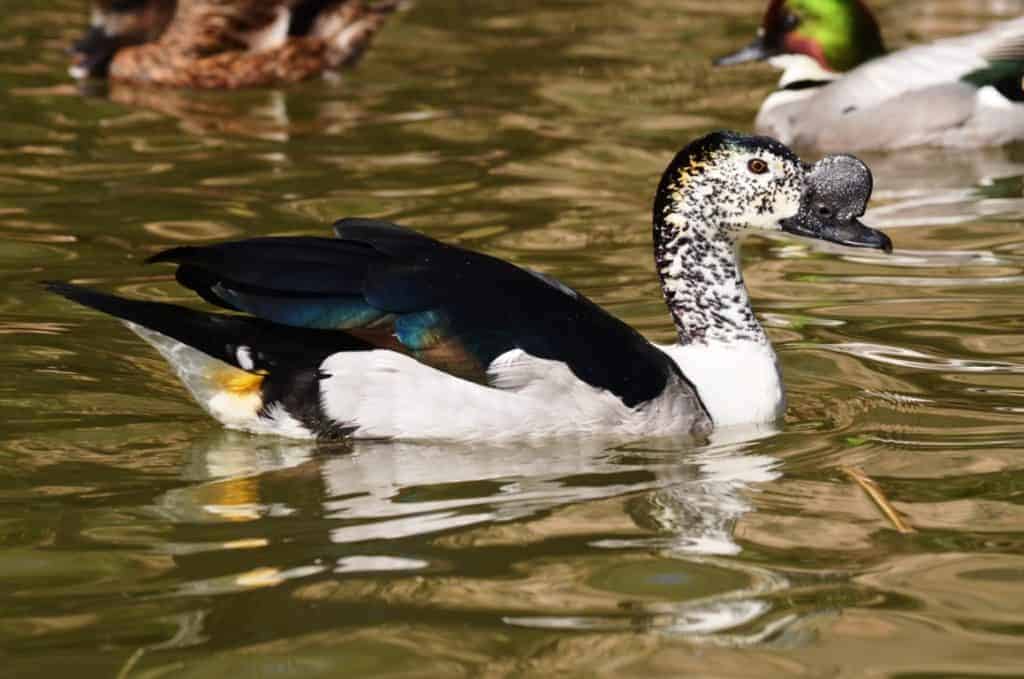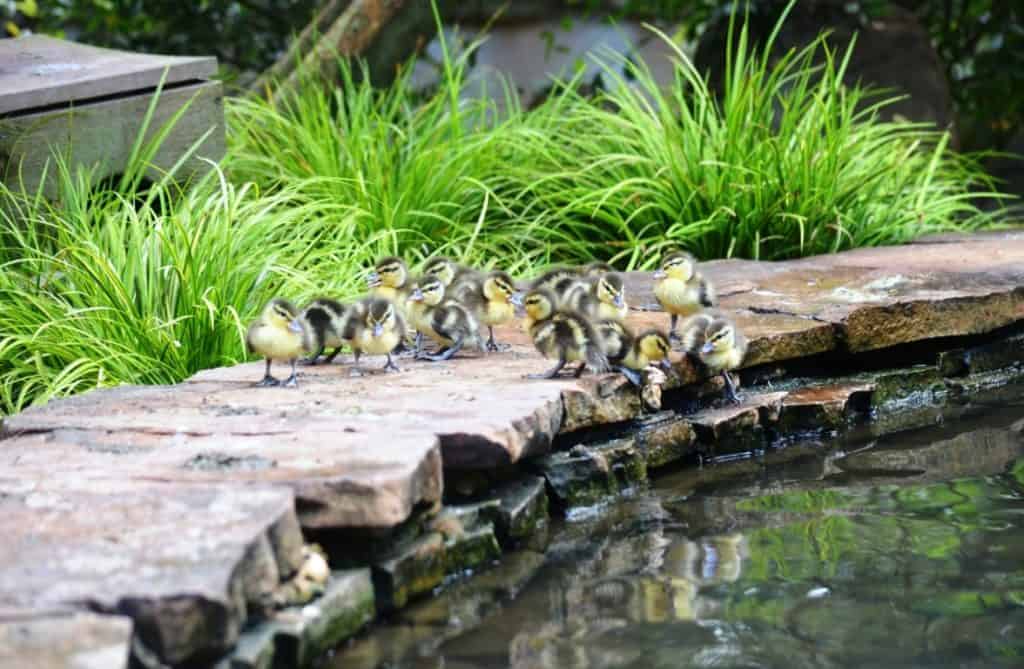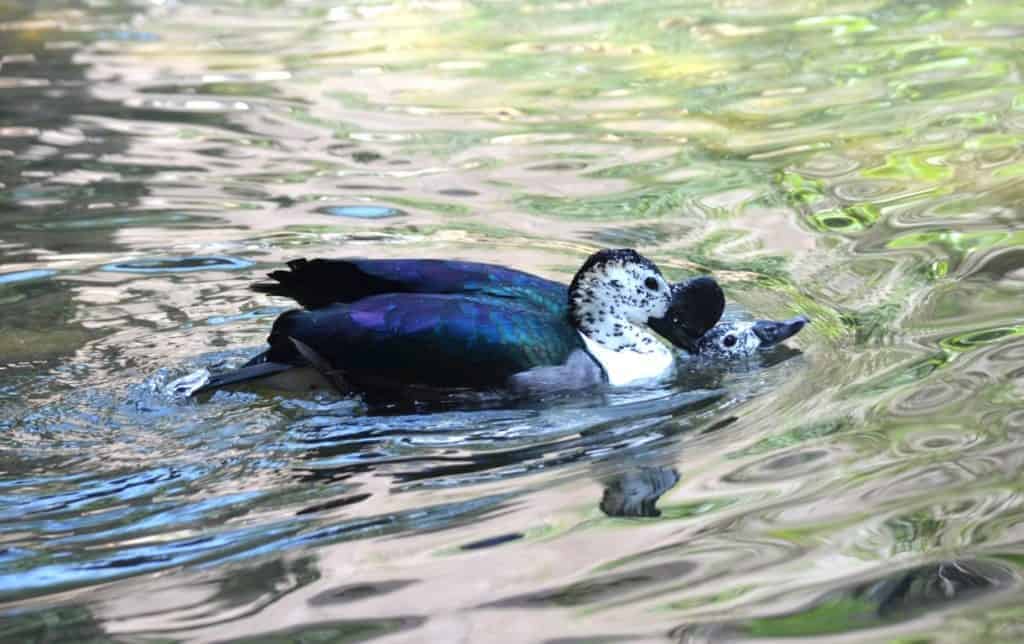African Comb Duck

The African Comb Duck tends to be the one most common in North American collections; conversely the smaller American Comb Duck is favoured in European aviculture.

Sarkidiornis melanotos
Very slightly larger than their American cousins, the African Comb Ducks are heavily built ducks of wooded wetlands, particularly of the wooded savannah. They are sometimes referred to as Old World Comb Ducks. IOC lists these birds as Knob-billed Ducks.
Sexes are easily distinguishable. Males are much larger than females, and have a very large, black knob on the top of the bill at the base of the forehead. In the breeding season this knob becomes more prominent. Females have a relatively minor bump in the same spot. Both sexes have a speckled head, white front and black back, wings and tail.

The African Comb Duck has glossy and iridescent plumage on its back and the amount of spotting on the white is highly variable. Ducks tend to have more spotting. Both sexes have a little yellow or cinnamon diffusing through the white.
Drakes usually take a harem of several females. Reproduction in the wild is timed with the rainy season. In some years when the rains fail, they may not breed at all. Comb Ducks feed on aquatic plants, seeds and various invertebrates, such as larval aquatic insects and locusts.
African Comb drakes will breed with one, or multiple females, so tend to do best as a trio. They typically nest in cavities, often several metres up. Dump-nesting is common, a single duck lays 6-11 eggs. They may use ground cover if stumps or logs are unavailable. Males take part in rearing young with multiple females.